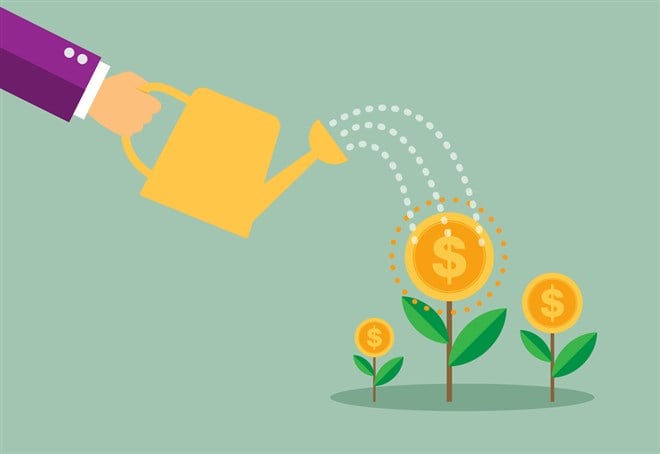
Backed by the U.S. government, the closely watched 10-year Treasury note offers a high degree of safety that stocks and other investments can’t match. What they no longer offer, however, is a 4% annualized interest rate.
Since the Silicon Valley Bank collapse, Treasury rates have been in a freefall. With the financial sector on shaky ground, investors have flocked to the relative safety of government debt in recent weeks, pushing prices higher and yields lower.
In just over two weeks, the yield on the 10-year note fell from 4.07% to 3.42%. The move was reminiscent of when the benchmark rate sank below 4% in May 2008 at the heart of the global financial crisis. And despite UBS rescuing Credit Suisse, risks swirling around the European lending market could push global yields even lower.
So while U.S. bonds will continue to be a safe haven for weary investors, they no longer offer the same returns. This could eventually lead to an exodus from bonds to equities that offer more attractive yields — especially if U.S. stocks continue to drift from their 2023 highs.
More than one-fifth of S&P 500 companies now have dividend yields that are greater than the current 10-year yield. This is a significant increase from early March when stocks were rallying and bond yields peaking.
But how to narrow this 100-plus stock list down?
Look to the Dividend Aristocrats.
Since these S&P companies have raised their dividends for at least 25 consecutive years, they offer a degree of stability during turbulent times. Dividend yields greater than the 10-year plus the potential for price appreciation could be a winning formula in this environment.
Did Kimberly-Clark Extend Its Dividend Hike Streak?
Kimberly-Clark Corp. (NYSE: KMB) has trended lower since reaching a pandemic-fueled record high in August 2020. What has continued to move higher, though is the consumer product maker’s dividend. In January 2023, its quarterly dividend was increased to $1.18 per share. Annualized equates to a $4.72 per share cash payout and a forward dividend yield of around 3.8%.
This makes it 51 straight years that Kimberly-Clark has boosted its dividend — and there’s no reason to believe the pattern won’t continue. The company’s portfolio of well-known brands (Scott, Kleenex, Huggies, Depends) are in constant demand, even during recessions and financial crises. Input costs have pressured recent results and guidance, but a historically low P/E ratio should limit further downside. Kimberly-Clark, which has traded in the 16x to 31x range over the last five years, is currently trading at 22x earnings.
What Is AbbVie’s Current Dividend Yield?
AbbVie Inc. (NYSE: ABBV) is coming off a strong 2022 performance, but the stock has been in correction mode this year. The drug manufacturer currently has a 3.8% forward dividend yield that is more than double that of the average health care name. Like Kimberly-Clark, AbbVie has raised its dividend for more than a half-century, earning it a spot in the Dividend Aristocrats. The dividend looks as secure as ever, with the balance sheet in good health and the dividend payout ratio at 53%.
The company behind Rinvoq, Skyrizi and other blockbuster pharmaceuticals has another positive streak in its favor. It has topped consensus earnings estimates for 16 consecutive quarters dating back to early 2019. AbbVie’s fourth quarter results demonstrated an ability to offset slowing Botox sales and generic competition for Humira and Imbruvica with new products.
In addition to its sector-leading dividend yield, AbbVie sports a sector-leading valuation. The stock goes for 23x earnings compared to 44x for the average health care stock.
Does Stanley Black & Decker Pay a Good Dividend?
A casualty of the housing market slowdown, Stanley Black & Decker, Inc. (NYSE: SWK) is trading more than 60% below its 2021 all-time high. The company still has plenty of challenges to work through — inventory pile-ups at big box retailers, inflation-related demand weakness and higher debt from acquisitions — that are expected to add up to a net loss in the first half of 2023.
One of the S&P 500’s most distinctive dividend streaks is in jeopardy. Stanley Black & Decker has increased its dividend for 55 straight years. And while management stressed the importance of the dividend during its February 2023 earnings call, its ability to maintain it, let alone raise it, will depend on cash flow generation in the coming months. Customers will have to buy enough tools and storage products to offset higher interest expenses and other cost pressures.
Based on Wall Street’s earnings projections for the current fiscal year, the dividend appears safe. The forward payout ratio of 63% leaves wiggle room for at least maintaining the $0.80 per share quarterly dividend, even if it means compromising near-term financial strength. Since this is a major attraction of the investment, suspending the dividend at this point could cause the stock to get ‘hammered.’ Stanley Black & Decker’s 4.1% yield carries more risk than other dividend growers, but it's hard to envision management putting a monkey wrench in a five-decade streak.













